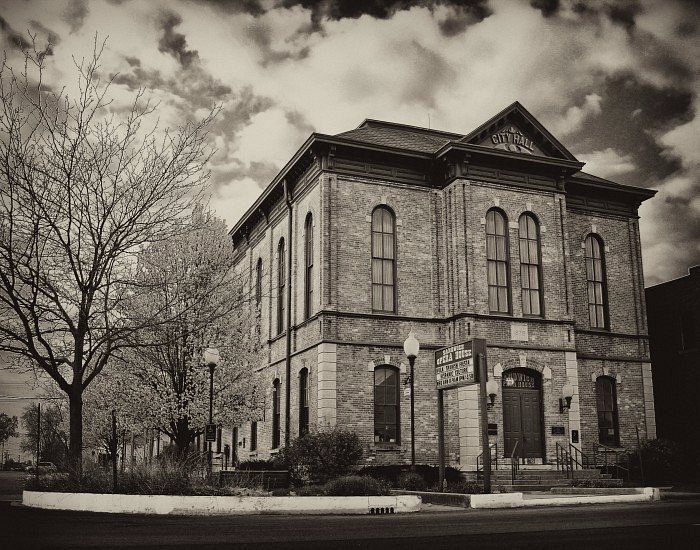Sandwich Opera House, Illinois, United States
4.5 (15 reviews) Friday: 11:00 AM - 3:30 PM Spent 2-3 hours Ranking #2 in Sandwich Operas

Beautiful
On August 20, 1878, 25 years after Sandwich first became a town, a contract was signed for construction of the Sandwich City Hall and Opera House. An allotment of $10,000 was given for the project. Fast forward 108 years. After much time, money and energy by volunteers to restore and renovate the City Hall and the Opera House, a grand re-opening was held on April 12, 1986. Once again the building functions as a community oriented facility, bringing community theater, lectures, recitals, style shows, weddings and a wide variety of outstanding performers, ranging from country to classical, to its stage.
Address
140 E Railroad St, Sandwich, IL 60548-2181
Mobile
Website
http://sandwichoperahouse.org/
Working hours
Monday : 11:00 AM - 3:30 PM
Tuesday : 11:00 AM - 3:30 PM
Wednesday : 11:00 AM - 3:30 PM
Thursday : 11:00 AM - 3:30 PM
Friday : 11:00 AM - 3:30 PM
Saturday :
Sunday :
Current local date and time now
Friday, May 10, 2024, 12:53
User Ratings
4.5 based on (15 reviews)
Reviews
-
5Taylor B 5:00 PM Sep 9, 2018
This historic building dates to 1878
Take a guided tour of the Sandwich City Hall and Opera House. Located at 140 East Railroad Street in Sandwich, Illinois, it was built in 1878, a quarter-century after Sandwich first became a town. It was one of the early buildings in the expanding Midwest which proved to be a complete "community center" with offices for the mayor, city government, police department and fire department and a five-cell jail on the first floor and the Opera House on the second floor. The Opera House served as the core of social and cultural activities of the community with shows by traveling troupes from vaudeville to Shakespeare, home talent productions, lecture series, recitals, high school graduations, political rallies, temperance meetings, the Fireman's Ball and church gatherings. Over the years, the 48-foot by 80-foot building, with the lower floor 12 feet high and the upper floor with balcony 11 feet high, outside facilities took over many of the Opera House's activities (the last high school graduation was held there in 1922) and it was largely abandoned after World War II. However, the functions of city government continued within the building. In 1979, the building was placed on the National Register of Historic Places and a community group formed to restore and renovate the Opera House. Extensive research was done to provide an accurate representation of the theater as it was in the 1890s. Wall and ceiling stenciling was reproduced and chandeliers appropriate to the period were installed. New sophisticated sound and lighting equipment was integrated inconspicuously into the historic fabric of the space and an addition was built to house dressing rooms, a theater workshop, storage areas and a community room on the first floor. Since work was completed in 1986, the building once again began to function as a community-oriented facility, bringing community theater by the Indian Valley Theatre company, recitals, dance, concerts, style shows, lectures, weddings, summer theater workshops for children and country western, classical and bluegrass performers to its stage. On your tour, be sure to note that the old jail cells on the first floor have been converted into washrooms with the steel bars still on display.
-
4TADSS Guy 5:00 PM Mar 20, 2019
Solo performance
$5 ticket to see & hear solo guitarist. Played 2 sets acoustics were phenomenal. Blues, folk and many were original. Great venue. I plan to keep an eye open for future performances. Totaly enjoyable evening. Volunteer staff of opera house are wonderful.